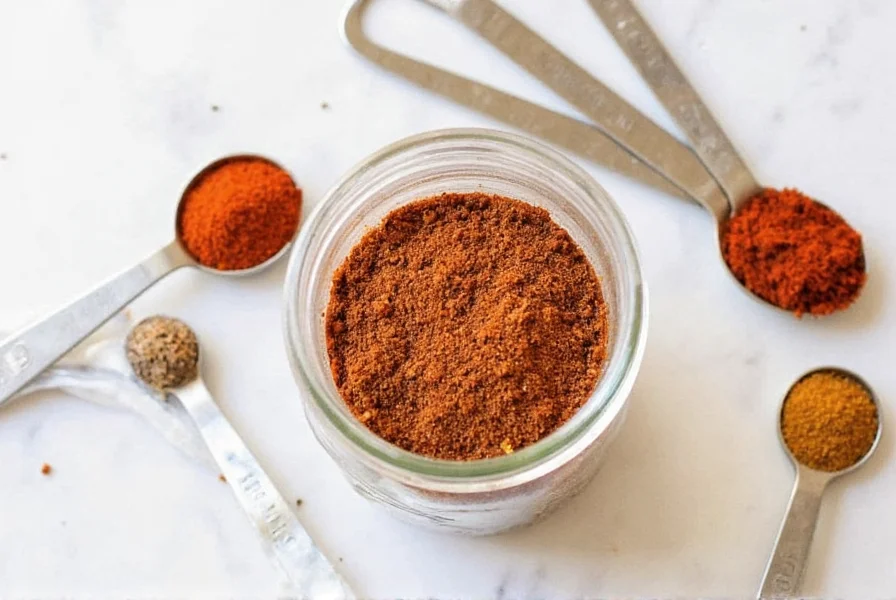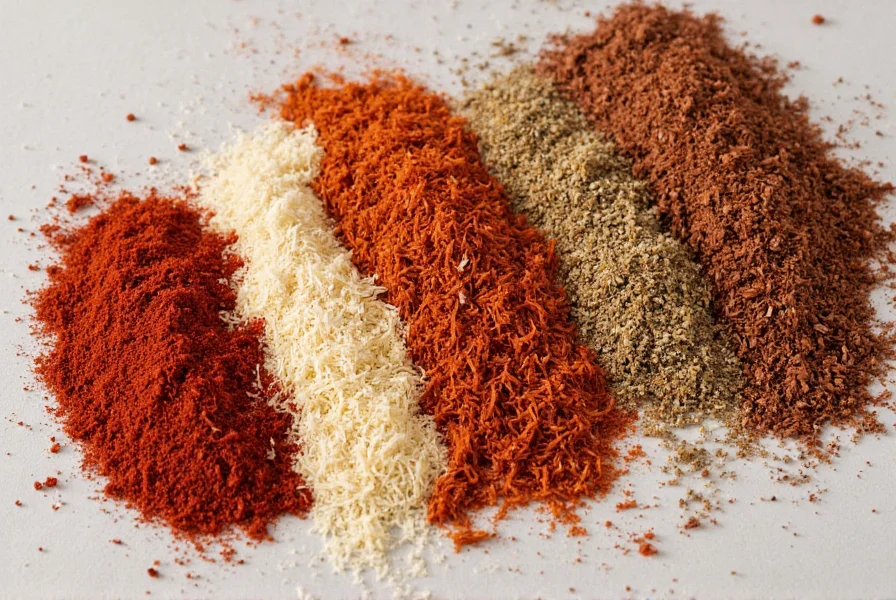Creating the perfect pot of chili relies heavily on your seasoning choices. While recipes vary by region and personal preference, understanding which spices work together and why can transform your chili from ordinary to extraordinary. This guide explores the science and art of chili seasoning, helping you build layers of flavor that satisfy both traditionalists and adventurous eaters.
The Essential Chili Seasoning Foundation
Every great chili starts with a solid base of core seasonings that define its character. These aren't just random spices thrown together—they work synergistically to create that unmistakable chili profile.
Chili powder serves as the backbone of any chili seasoning blend. Contrary to what the name suggests, chili powder is actually a blend itself, typically containing ground chilies, cumin, garlic powder, and oregano. When selecting chili powder, look for varieties labeled "ancho" or "New Mexico" for authentic flavor profiles that work well in traditional chili recipes.
Cumin provides that earthy, slightly smoky note that's essential for depth. Its warm, distinctive flavor stands up well to long cooking times without becoming bitter. For the best results, toast whole cumin seeds before grinding them—this releases their essential oils and creates a more complex flavor than pre-ground cumin.
| Core Seasoning | Flavor Profile | Recommended Amount (per lb meat) |
|---|---|---|
| Chili powder | Earthy, slightly spicy, complex | 2 tablespoons |
| Cumin | Earthy, warm, slightly smoky | 1 tablespoon |
| Garlic powder | Pungent, savory | 1 teaspoon |
| Onion powder | Sweet, savory | 1 teaspoon |
| Paprika | Smoky, sweet, mild heat | 1/2 teaspoon |
Building Flavor Complexity with Secondary Seasonings
Once you've mastered the foundation, it's time to explore secondary seasonings that add nuance and complexity to your chili. These ingredients work in the background to enhance the primary flavors without overpowering them.
Dried oregano, particularly Mexican oregano, adds a subtle floral note that complements the earthiness of cumin. Unlike Mediterranean oregano, Mexican oregano has a more citrusy, less pungent flavor that works beautifully in chili. Add it early in the cooking process to allow its flavors to meld with the other ingredients.
Cayenne pepper provides adjustable heat. Start with 1/8 teaspoon per pound of meat and adjust to taste. Remember that chili's heat intensifies as it cooks and sits, so it's better to start conservatively. For those seeking heat without overwhelming spice, consider using chipotle powder instead—it delivers both heat and a distinctive smoky flavor.
Unexpected ingredients like unsweetened cocoa powder or strong coffee can deepen your chili's flavor profile. The natural bitterness of cocoa enhances the savory elements without making your chili taste chocolatey. Just 1-2 teaspoons per batch creates remarkable depth. Similarly, a tablespoon of strong coffee or espresso powder enhances the umami notes in your chili without making it taste like coffee.

Regional Variations in Chili Seasoning
Chili seasoning varies dramatically across regions, each with its distinctive approach to spice blends. Understanding these differences helps you create authentic regional styles or blend elements to create your signature version.
Texas-style chili, or chili con carne, focuses almost exclusively on meat and chili peppers, with minimal additional seasonings. Traditional Texas chili contains no beans and relies on different varieties of dried chilies (like ancho, guajillo, and pasilla) for its complex flavor profile. The seasoning approach here is about showcasing the natural flavors of quality meat and carefully selected chilies.
Cincinnati chili takes a dramatically different approach, featuring Mediterranean-inspired spices like cinnamon, allspice, and cloves. This sweet-spicy profile creates a distinctive flavor that's typically served over spaghetti with shredded cheddar cheese—a combination that surprises many first-time tasters but has loyal followers across the Midwest.
New Mexico chili emphasizes fresh green chilies, particularly the state's famous Hatch varieties. The seasoning here is simpler, allowing the distinctive flavor of roasted green chilies to shine. A touch of cumin complements but doesn't dominate the fresh pepper flavor.
Timing Matters: When to Add Different Seasonings
Professional chefs know that when you add seasonings matters as much as what you add. Understanding the chemistry of spice incorporation can elevate your chili from good to exceptional.
Dried spices like chili powder, cumin, and paprika should be added early in the cooking process, ideally when sautéing your aromatics (onions, garlic). The heat from cooking helps release the essential oils in these dried spices, allowing their flavors to bloom and integrate fully with the other ingredients. This technique, called "blooming" or "toasting" spices in oil, creates a more complex flavor profile than adding dried spices to liquid later in cooking.
Fresh herbs like cilantro should be added in the final 10-15 minutes of cooking. Their delicate flavor compounds break down with prolonged heat, resulting in a muted, sometimes bitter taste. Similarly, acidic elements like lime juice or vinegar should be added at the end to preserve their bright, fresh character.
For those using whole spices (like cumin seeds or coriander seeds), toast them in a dry pan before grinding. This simple step dramatically increases their aromatic complexity. Just be careful not to burn them—spices go from perfectly toasted to bitter very quickly.
Creating Your Signature Chili Seasoning Blend
Once you understand the fundamentals, you can create a custom chili seasoning blend tailored to your taste preferences. The best homemade chili seasoning ratio balances heat, earthiness, sweetness, and acidity.
Start with the foundational ratio: 2 parts chili powder, 1 part cumin, 1/2 part garlic powder, 1/2 part onion powder, and 1/4 part paprika. From this base, you can adjust according to your preferences. Want more heat? Increase the cayenne gradually. Prefer a smokier profile? Add smoked paprika or a pinch of chipotle powder.
For a well-rounded seasoning blend that works across most chili recipes, try this proportions for a versatile homemade chili seasoning:
- 1/4 cup chili powder
- 2 tablespoons ground cumin
- 1 tablespoon garlic powder
- 1 tablespoon onion powder
- 2 teaspoons paprika (sweet or smoked)
- 1 teaspoon dried oregano
- 1/2 teaspoon cayenne pepper (adjust to heat preference)
- 1/2 teaspoon black pepper
- 1/4 teaspoon cinnamon (optional for depth)
Mix these thoroughly and store in an airtight container. This blend will keep for up to 6 months, though the flavors are most vibrant within the first 2-3 months. Use 2-3 tablespoons per pound of meat as a starting point, adjusting to taste.

Common Chili Seasoning Mistakes to Avoid
Even experienced cooks make seasoning errors that prevent their chili from reaching its full potential. Recognizing these common pitfalls can save your next batch from disappointment.
Over-salting is perhaps the most frequent mistake. Salt draws out moisture from ingredients and intensifies as chili reduces during cooking. Start with less salt than you think you need, and adjust in the final 30 minutes of cooking. Remember that many store-bought broths and canned tomatoes already contain significant sodium.
Adding all seasonings at once ignores how different spices behave during cooking. As mentioned earlier, dried spices benefit from early addition while fresh herbs and acids should come later. This staged approach creates layered, complex flavors rather than a flat, one-dimensional taste.
Using old spices is another common error. Ground spices lose their potency after 6-12 months. If your chili powder or cumin doesn't have a strong aroma when you open the container, it's time to replace them. Whole spices stay fresh longer—consider grinding your own for maximum flavor impact.
Special Dietary Considerations for Chili Seasoning
Many commercial chili seasoning blends contain additives that don't suit all dietary needs. Creating your own blend gives you complete control over ingredients.
For low-sodium diets, skip the salt in your seasoning blend and rely on the natural flavors of quality spices. Boost umami with ingredients like dried mushrooms (powdered in a spice grinder) or a splash of tamari instead of soy sauce. The key is building flavor complexity so you don't miss the salt.
Gluten-free cooks should be aware that some commercial chili powders contain wheat as a filler. Making your own blend ensures it's completely gluten-free. Similarly, those avoiding anti-caking agents (like silicon dioxide) will appreciate the purity of a homemade mix.
Vegan and vegetarian chili benefits from umami boosters since it lacks the natural depth from meat. Add 1 teaspoon of nutritional yeast to your seasoning blend, or include dried porcini mushrooms ground to powder. A small amount of liquid smoke can also enhance the savory profile without adding animal products.
Final Thoughts on Perfecting Your Chili Seasoning
Mastering chili seasoning is both a science and an art. The best approach combines understanding flavor chemistry with personal experimentation. Start with proven ratios, then adjust based on your taste preferences and the specific ingredients you're using.
Remember that great chili seasoning isn't about piling on as many spices as possible—it's about creating harmony among complementary flavors. The most memorable chili has a balanced profile where no single seasoning dominates, but rather works together to create something greater than the sum of its parts.
Take notes on your experiments: which combinations worked, which didn't, and why. Over time, you'll develop an intuitive sense for seasoning that transforms your chili from good to extraordinary. The perfect pot of chili awaits—just season wisely.











 浙公网安备
33010002000092号
浙公网安备
33010002000092号 浙B2-20120091-4
浙B2-20120091-4